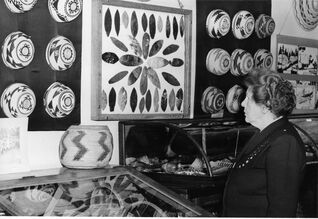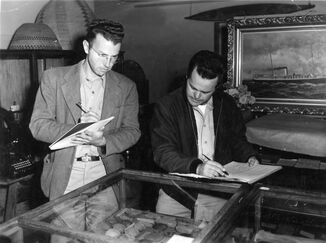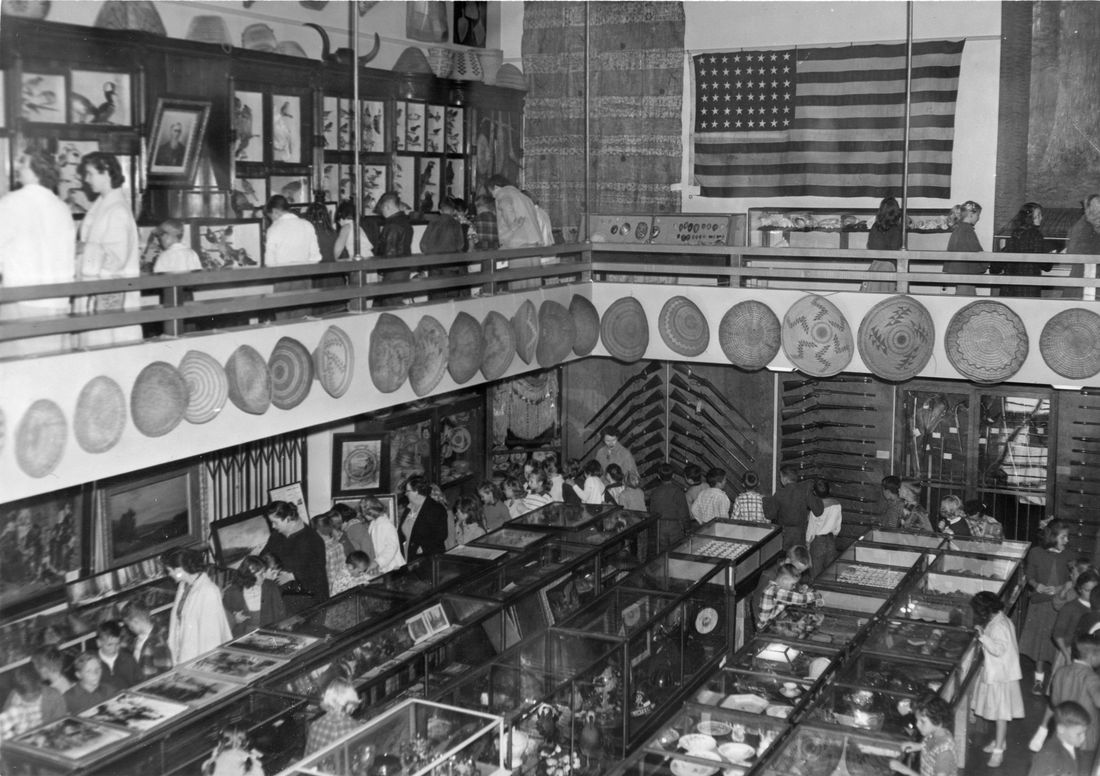Teacher ResourcesField trips to the Clarke can be important supplements to the study of Native American cultures & the history of the United States, California, and Humboldt County.
Also, individual student research projects can be accommodated here. 
Schools and The Clarke Museum The Clarke Museum began in the 1920s with exhibits assembled by history teacher Cecile Clarke at Eureka High School. Miss Clarke believed that history became more meaningful to students if they could see objects people used in the past. She moved her museum to the former Bank of Eureka building in 1960, and the collection grew rapidly with donations from the community. An annex was added in 1979 to house the outstanding Native American collection. Because of its origins, the Clarke Museum has always been particularly supportive of schools and their educational needs. Generations of Humboldt County residents have visited the Clarke as part of their school experience. 
School Tours
Docent led school tours can cover the entire Museum or focus on the Native American or other specific exhibits. Large groups are usually divided, or you can arrange to have one group at the Clarke and another visiting Old Town, the Madaket, or the nearby Discovery Museum and then exchange. The length of the tours can vary depending on the age, attention span and schedule of the group, but usually they run for about an hour. A ramp at the Museum’s north door off the alley accommodates wheelchairs and the public restroom is ADA compliant. Scheduling
Call the Museum, (707) 443-1947, between 10AM - 5PM, Tuesday through Sunday. The scheduler will ask for your school, contact person and phone number, grades, number of students and adults, your preferred dates, arrival time and time allotted for the tour, as well as any special interests or emphasis for the tour. Fees
Each docent led tour or outreach presentation requires a $25 donation. Recognizing that some school budgets are prohibitively tight, in an attempt not to exclude any school children because of cost, we invite those classes on a budget to come on a self-guided tour and donate what they can. We have scavenger hunts available for self-guided tours, which can be found in the printable resources section. Classroom Preparation
Tours of the Museum are much more enjoyable and useful to students if there has been preparation in the classroom ahead of time. Often teachers have been working on specific topics, such as Native American life, so the students come with a good basic knowledge. Sometimes teachers prepare their own question sheets or scavenger hunts for the students to fill out. Remember that our exhibits change frequently so a sheet that was appropriate last year might not apply this year. Teachers may want to visit the museum several days ahead of the tour date to prepare their worksheets. Also, a little preparation on “museum etiquette” is useful. It is particularly important that students understand why they should not touch items in the museum. Explain that old things break easily and that all human hands have oil that can damage old materials. We who work in museums often wear gloves when handling objects for this reason. Also, visitors should not run, push or talk loudly – things that can damage artifacts and detract from other visitors enjoyment of the museum. It is important to have a number of adult chaperones accompanying the children, those adults need to realize that they are responsible for the children’s behavior and attentive learning, and so should not spend time talking among themselves or wandering on their own. After the Tour
We have a gift shop that carries a wide range of items including many that fit the interests and finances of school children. You’ll want to decide ahead of time if students will be allowed to shop here, and if so to suggest they bring a little spending money. We also have a number of resources of particular interest to teachers including books on Native American subjects and other aspects of local history. Anything spent in the gift shop goes to help fund Museum operations. After your visit here please encourage your students to return with their families as our exhibits change frequently and there is always something new to see. Teachers-please fill out and return our teacher survey after your visit, your feedback helps us to improve our programs to meet the needs of our local children. Resources for Museum- Quality Care of HeirloomsPrevious Nealis Hall Registrar-Curator Brittany compiled this list of resources for new museum professionals to learn about industry standards for the care of items in the museum. Some of the resources are more geared towards basketry and regalia care, but others are more broad and can be applicable to many other types of heirloom items. Some of these resources could be used in the classroom by asking students how they may care for things special to them to ensure their longevity.
|
Open Tuesday-Sunday
10 a.m. to 5 p.m. Closed Monday Eureka Arts Alive 1st Saturday of the Month 6 p.m. - 9 p.m. 240 E Street Eureka, California 95501 (707) 443-1947 [email protected] Admission $5 person $15 family |
Clarke Historical Museum
|
240 E Street
Eureka, California 95501 [email protected] (707) 443-1947 |
Open Wedensday - Sunday
11 a.m. to 4 p.m. Closed Monday and Tuesday Open until 8:30 p.m. during Friday Night Markets Open until 9 p.m. during Eureka Arts Alive |
Copyright © 2018. All Rights Reserved.

